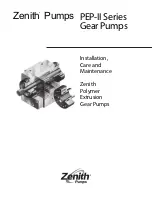
EC DECLARATION OF CONFORMITY
We CANNON TOOLS LTD
20 Station road, Rowley Regis, West Midlands,B65 0JU.U.K.
Declare that the following machine complies with the appropriate basic safety and
health requirements of the EC Directive based on its design and type, as brought
into circulation by us.
In case of alteration of the machine, not agreed upon by us, this declaration will
lose its validity.
Product description : 12V DIESEL FUEL TRANSFER DISPENSER PUMP
Model: CT 5261
Applicable EC Directives:
EC Machinery Directive 2006/42/EC
EC Low Voltage Directive 2014/35/EU
EC Directive of Electromagnetic Compatibility 2014/30/EU
Harmonized standards
:
EN ISO 12100, EN 60335-1, EN 60335-2-41, EN 55014-1,
EN 55014-2, EN 61000-3-2, EN 61000-3-3, EN 61000-6-1, EN 61000-6-3
20 Station Road, Rowley Regis, West Midlands, B65 0JU.U.K.
Mr. Gurcharan Tony Singh Sanghera
Managing Director
CANNON TOOLS LTD
2019-12-04
Warning
•The user must absolutely observe the accident-prevention measures in force, and must
also respect the indications provided in the following chapters.
•Never shift the motor pump during operation for any reason whatsoever.
•Before using the motor pump, always make sure that the power supply cable and all the
other devices are in perfect working condition.
•Before starting the motor pump, make sure that you are not barefoot, that your hands are
not wet, and that you are not even partially standing in water.
•The motor pumps are constructed in such way that all the moving parts are protected by
casings. Never remove any of these casings when the motor pump is running for any
reason whatsoever.
•It is very important to keep the motor pumps’ power socket protected from sprays of water,
rain and atmospheric agents in general and all the other liquids.
•Not for use with gasoline or alcohol.
•Not for use in hazardous locations.
•Improper use or installation of this product can cause serious bodily injury or death.
• Do NOT smoke near pump or use pump near an open flame.
• Do not use this product for fluid transfer into aircraft.
• This product is not suited for use with fluids for human consumption or fluids containing
water.
• Do not dispense fluid that is thicker than diesel fuel. Motor may overheat.
SAFETY INSTRUCTIONS
To ensure safe and efficient operation, it is essential to read and follow each of these warnings
and precautions.
1. Disconnect power to pump before servicing pump.
2. A diesel compatible filter should be used on pump outlet to ensure that no foreign material is
transferred to fuel tank.
3. Tank or barrel should be anchored to prevent tipping in both the full and empty conditions.
4. The pump should never be left running unattended.
HANDING AND TRANSPORT
Unpacking
Whenever the packaging appears to have been damaged, check the motor pump for signs of
damage during transport of handling.
WARNING: Before installing and using the motor pump, check the identification plate to make
sure that the model and its characteristics correspond to those specified.
Handling disassembly and transport
Although the reduced size and weight of the motor pump will not create particular problems in
transport, we recommend the following:
Never move the motor pump for any reason without first unplugging the power supply plug from
the socket or disconnecting the electrical power supply.
Unscrew and remove the delivery and suction tubes.
Unscrew the bolts or screws used to anchor the motor pump in place.
Never move or drag the motor pump by pulling its power supply cable.
USE AND STARTING
Electrical power supply connection:
Before using, first make sure pump is to use DC power or AC power.
If the pump’s power is DC power:
(1)Connect the pump’s clamps to a battery capable of delivering the current and voltage
required for the operation of the pump.
(2)If a motor vehicle battery is used to power the pump, we recommended first removing it from
the vehicle and standing it on a stable surface in a comfortable position.
(3)The pump can be connected to a battery mounted in a motor vehicle only if the vehicle is
parked outdoors and only if the pumps’ electrical cables and connection piping are long enough
to provide the pump with solid support.
(4)The use of extension cords for the electric cables connected to the clamps is prohibited .If
the length of the cables supplied with the machine is not sufficient to power the pump, the
clamps must be substituted with jack plugs of adequate section by a specialized electrician.
(5)The pump can be connected to a battery-charger only of adequate power equipped with
terminals, never make connections to clamps coming from the battery charger and connect the
pumps’ clamps directly to the battery charger’s terminals in order to prevent the generation of
sparks that might cause fires.
(6)Make sure that the voltage of the pump (indicated on the identification plate) corresponds to
the voltage of the battery.
(7)Make to always respect polarity: connect the black clamps to the - pole and the red clamps to
the + pole.
Be extremely careful (when connecting the pump to the battery) to avoid making contact
between opposite poles and creating sparks (which can cause fire). We recommend connecting
the negative pole first and then the positive pole.
(8)Position the pump securely and make sure that the lengths of both the power supply cables
and the piping are sufficient to ensure solid positioning.
If the pump’s power is AC power:
(1) Power overload current protection switch must be installed
(2) Position the pump securely and make sure that the lengths of both the power supply cables
and the piping are sufficient to ensure solid positioning.




















